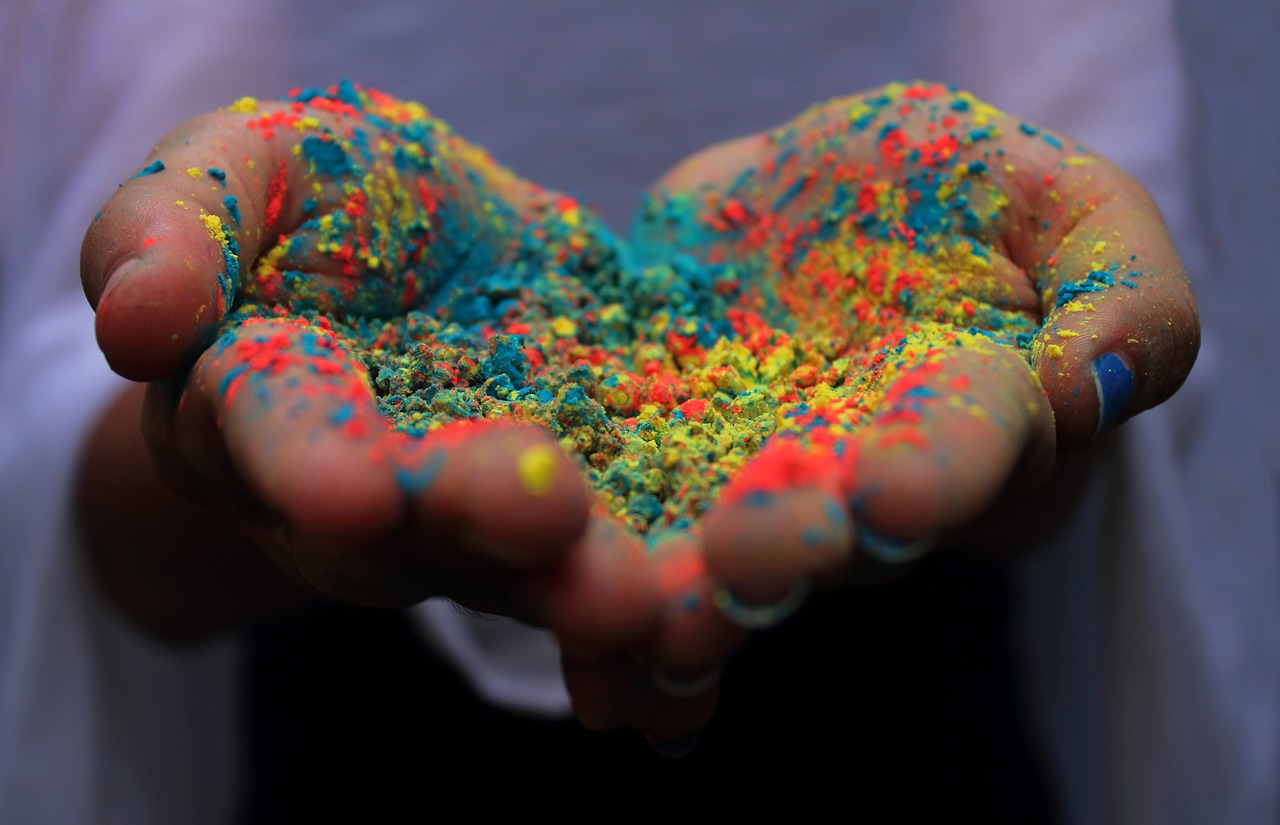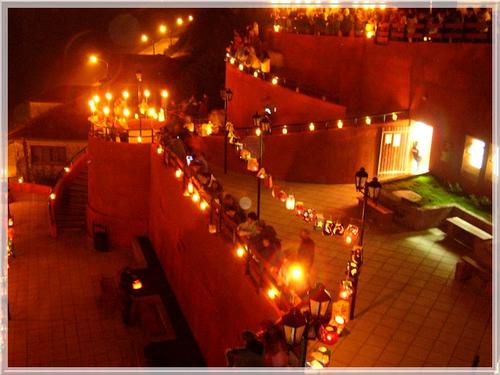Introduction
Weather has always played a vital role in shaping human cultures and traditions. Throughout history, communities around the world have developed rituals, festivals, and celebrations closely tied to weather patterns and natural phenomena. These age-old practices reflect not only the significance of weather in daily life but also offer a glimpse into the rich tapestry of human history and diversity. In this article, we will explore some fascinating weather-related cultural traditions and celebrations from different corners of the world.
Weather and culture have a deep-rooted connection. Here are some examples of weather-related cultural traditions and celebrations from around the world:
Songkran (Thailand): Songkran, also known as the Thai New Year, is celebrated with a massive water fight. It occurs during the hottest month of the year, April, and the water symbolizes purification and the washing away of sins.
Diwali (India): Diwali, the Festival of Lights, marks the victory of light over darkness and good over evil. It’s celebrated with the lighting of oil lamps and candles, symbolizing the triumph of light, which is particularly significant during the shorter days of autumn.
Cherry Blossom Festivals (Japan): The arrival of cherry blossoms in spring is celebrated with hanami (flower viewing) parties. People gather under the blooming cherry trees to appreciate their beauty, marking the changing seasons.
Day of the Dead (Mexico): Celebrated on November 1st and 2nd, this holiday honors deceased loved ones. Weather plays a role as families picnic in cemeteries to be close to their departed, often under the warm autumn sun.
Midsummer (Sweden): Midsummer festivities in Sweden involve dancing around a maypole and celebrating the longest day of the year. It’s a way to make the most of the short-lived Scandinavian summer.
Carnival (Brazil): The vibrant Carnival in Brazil typically takes place before Lent and features samba parades and colorful costumes. The warm, tropical climate contributes to the energetic and lively atmosphere.
Hanukkah (Israel): Hanukkah, the Festival of Lights, is celebrated in December. The weather often influences the type of foods prepared, with fried dishes like latkes and sufganiyot enjoyed during this holiday.
Burning Man (USA): This unique gathering in the Nevada desert celebrates radical self-expression and community. Participants endure the desert’s extreme heat and dust storms, adding a weather-related challenge to the event.
Christmas (Various Countries): While Christmas traditions vary widely, many involve embracing the winter weather. Activities like sledding, ice skating, and building snowmen are enjoyed in regions with cold climates.
Holi (India): Known as the Festival of Colors, Holi celebrates the arrival of spring. Participants engage in colorful powder throwing, dancing, and feasting, embracing the warmer and more vibrant season.
These cultural traditions and celebrations not only connect people to their natural surroundings but also serve as a testament to the human capacity for creativity and resilience in the face of varying weather conditions.
If you’d like to dive deeper into this subject, there’s more to discover on this page: Managing the Risks of Extreme Events and Disasters to Advance …
The Holi Festival, also known as the Festival of Colors, is one of India’s most vibrant and popular celebrations. It marks the arrival of spring and the victory of good over evil. Participants engage in exuberant celebrations by throwing colored powders and water at each other, creating a dazzling and colorful spectacle. Holi is a joyful occasion that embodies the transition from the cold, dark days of winter to the warm, colorful days of spring.
The Holi Festival, a cherished cultural gem of India, radiates with the spirit of joy, unity, and renewal. Beyond its vibrant display of colors, this festival weaves together the threads of tradition, spirituality, and communal celebration in a tapestry of significance:
1. Spiritual Significance: Holi is steeped in mythology and spirituality. It commemorates the triumph of good over evil, with the legend of Prahlada and Holika serving as a timeless parable. Prahlada’s unwavering devotion to Lord Vishnu and his miraculous escape from the fire lit by the wicked Holika are emblematic of the victory of righteousness and faith over malevolence.
2. Welcoming Spring: Holi’s timing couldn’t be more poetic. It ushers in the arrival of spring, a season that symbolizes rebirth, growth, and the renewal of life. As the earth awakens from its winter slumber, so too does Holi awaken the spirits of revelers, infusing them with the vitality of the season.
3. Unity and Camaraderie: The act of throwing colored powders and water at each other transcends boundaries. It bridges gaps between people of all ages, backgrounds, and social strata. On this day, differences are set aside, and the entire community comes together in a harmonious display of togetherness.
4. Expression of Joy: Holi is an unbridled celebration of joy. Laughter, music, and dance fill the air as participants let go of inhibitions and revel in the sheer delight of the moment. It’s a time to celebrate the simple joys of life and cherish the bonds of friendship and family.
5. Cultural Heritage: Holi is a testament to India’s rich cultural heritage. Its roots run deep in the traditions of the country, reflecting the diversity and unity of its people. The festival is an enduring link to India’s past, reminding the world of its captivating history and traditions.
6. Artistic Expression: The riot of colors during Holi is a form of artistic expression. Participants create vibrant, living canvases with their bodies, turning each other into walking works of art. The spontaneous creativity that emerges from this play with colors is a sight to behold.
7. Environmental Harmony: While the festivities may seem extravagant, Holi also underscores the importance of environmental harmony. Traditional, plant-based colors are being revived to replace synthetic ones, reducing the festival’s ecological footprint and fostering eco-friendly practices.
8. Social Bonding: Holi strengthens social bonds. Friends and family come together to celebrate, exchange gifts, and share traditional sweets. It’s a time for storytelling, reminiscing, and reinforcing the ties that bind.
9. Global Recognition: In recent years, Holi has transcended geographical borders and captured the imagination of people worldwide. Its vibrant colors and infectious spirit have turned it into a global celebration of diversity, love, and unity.
In conclusion, the Holi Festival transcends its role as a visual spectacle and takes on a multifaceted significance. It’s a celebration of spirituality, a tribute to nature’s cycles, an embodiment of unity, and an explosion of joy. As people around the world join in the festivities, they not only participate in a grand cultural celebration but also share in the timeless values of love, compassion, and the triumph of good over evil that Holi represents.
For additional details, consider exploring the related content available here The Meaning Behind the Many Colors of India’s Holi Festival | Travel …

Groundhog Day is a uniquely North American tradition that takes place on February 2nd each year. According to folklore, if a groundhog emerges from its burrow and sees its shadow, it will be scared and return to hibernation, indicating six more weeks of winter. If it doesn’t see its shadow, it will stay outside, signaling an early spring. Punxsutawney Phil, the most famous groundhog, is central to the celebration in Punxsutawney, Pennsylvania, where thousands gather to witness his prediction.
“Groundhog Day, a delightful tradition rooted in weather folklore, captures the anticipation of spring’s arrival. Whether Punxsutawney Phil sees his shadow or not, the celebration brings communities together to embrace the changing seasons and the whimsical weather predictions of a furry forecaster.”
Looking for more insights? You’ll find them right here in our extended coverage: First Groundhog Day

Loi Krathong is a Thai festival celebrated on the evening of the full moon in November. Participants create small, beautifully decorated boats made of banana leaves, flowers, candles, and incense. These boats, called “krathongs,” are set afloat on rivers and waterways as an offering to the water goddess Mae Khongkha. The festival is a time for Thais to express gratitude, make wishes, and symbolically release negativity.
“Loi Krathong is a vibrant and spiritual festival that brings communities together to celebrate nature and express their hopes and gratitude. It beautifully showcases the Thai culture’s deep connection with water and the importance of harmony with the environment. As krathongs float downstream with flickering candles and fragrant incense, they carry with them the collective wishes and appreciation of the people.”
To expand your knowledge on this subject, make sure to read on at this location: 12 Festivals in Thailand 2023 – Dates, Traditions – Holidify

In Mexico, the Fiesta de las Luminarias is celebrated during the Christmas season, usually on December 24th. Communities decorate their streets with small, candlelit lanterns or bags filled with sand and candles, called “luminarias.” These luminarias create a warm, inviting glow that symbolizes the welcoming of Mary and Joseph. The tradition is a beautiful blend of Christian and indigenous customs.
The Fiesta de las Luminarias in Mexico is a truly enchanting celebration that beautifully intertwines Christian and indigenous elements. This cultural tradition not only illuminates the streets but also sheds light on the rich tapestry of Mexican heritage.
Symbolism of Light: The use of small candlelit lanterns or luminarias during this celebration holds deep symbolism. Light has always been associated with hope, guidance, and warmth. In this context, the warm glow of the luminarias symbolizes the welcoming of Mary and Joseph, emphasizing the theme of hospitality.
Blend of Traditions: The Fiesta de las Luminarias showcases Mexico’s ability to harmonize diverse cultural influences. The tradition’s fusion of Christian beliefs with indigenous customs reflects the nation’s complex history, where ancient traditions have endured and intertwined with colonial and modern influences.
Community and Togetherness: Like many cultural celebrations, this tradition emphasizes the importance of community and togetherness. As families and neighbors come together to decorate their streets, it fosters a sense of unity and shared purpose. It’s a time when people gather to create something beautiful that benefits the entire community.
Christmas Spirit: The timing of the Fiesta de las Luminarias, on December 24th, aligns perfectly with the Christmas season. It contributes to the festive atmosphere of the holiday, adding a touch of Mexican flavor to the global celebration of Christ’s birth.
Artistry and Creativity: Decorating the luminarias is an art form in itself. People take pride in crafting intricate designs and patterns on the bags, adding a creative and artistic dimension to the tradition. The act of making and arranging the luminarias becomes a cherished family activity.
Tourist Attraction: Over the years, the Fiesta de las Luminarias has become a tourist attraction, drawing visitors from around the world. Tourists are often captivated by the magical sight of streets lit up with these glowing lanterns, making it a memorable experience for all.
In essence, the Fiesta de las Luminarias is more than just a holiday tradition; it’s a radiant expression of Mexican culture, history, and the enduring spirit of unity and celebration. It reminds us that traditions have the power to transcend time and connect us to our roots while illuminating our path forward.
You can also read more about this here: History of Christmas – Origins, Traditions & Facts

Songkran, the Thai New Year festival, is known for its spirited water fights. Celebrated in April, during the hottest time of the year, Songkran features people of all ages taking to the streets armed with water guns and buckets of water. The water symbolizes the cleansing of the past year’s misfortunes and welcomes the fresh start of the new year. It’s a fun and lighthearted way to cool off and engage in community celebrations.
Songkran, the Thai New Year festival, is a delightful tapestry of tradition, community, and refreshment that paints the streets of Thailand with vibrant energy. As the sun beats down during the hottest days of April, Songkran offers a unique and heartwarming way to celebrate the turning of the year:
1. Water as Purification: At the heart of Songkran is the symbolic power of water. Water, in Thai culture, represents purity and renewal. The act of dousing each other with water signifies the cleansing of the past year’s misfortunes and impurities. It’s a spirited ritual that allows people to wash away their troubles and embrace the promise of a fresh start.
2. Time-Honored Traditions: Songkran is deeply rooted in Thai traditions and customs. Families gather to pay respects to their elders, seeking blessings for the year ahead. Water is poured over the hands of revered family members as a sign of respect and gratitude. This intergenerational bonding fosters a sense of continuity and reverence for one’s heritage.
3. Community and Togetherness: Songkran transforms communities into playgrounds of joy. People of all ages come together to participate in the exuberant water fights. It’s a time when neighbors become allies, and strangers become friends. The shared experience of playfulness and merriment unites people in a way that transcends barriers.
4. Beating the Heat: Celebrated during Thailand’s sweltering hot season, Songkran offers a welcome respite from the scorching sun. The water battles are not only symbolic but also serve as a means of cooling off. The laughter and camaraderie that accompany the drenching ensure that everyone stays refreshed in the midst of the heat.
5. Cultural Heritage: Songkran is a living testament to Thailand’s cultural heritage. It’s a time when traditional clothing, customs, and rituals take center stage. The festival provides a glimpse into the rich tapestry of Thai culture and the importance of tradition in modern life.
6. Global Appeal: Over time, Songkran’s appeal has transcended national borders. Travelers from around the world are drawn to Thailand to experience the exuberance of this unique celebration. It has become a symbol of Thailand’s warmth and hospitality, welcoming visitors with open arms and buckets of water.
7. Symbol of Resilience: Songkran’s continuation, despite the challenges of the modern world, symbolizes the resilience of tradition and the enduring spirit of celebration. It serves as a reminder that, no matter how fast-paced life becomes, there are moments when we can come together to revel in the simple joys of life.
8. Uniting Cultures: Songkran’s appeal is not limited to Thailand alone. It has inspired water festivals and celebrations in other parts of the world, fostering cross-cultural exchanges and shared moments of happiness.
In conclusion, Songkran is a beautiful fusion of symbolism, tradition, and sheer fun. It showcases the power of rituals to bring people together, offering a refreshing start to the new year. As the world celebrates Songkran, it not only honors Thai culture but also finds a shared connection in the universal themes of renewal, togetherness, and the sheer joy of living in the present moment.
To expand your knowledge on this subject, make sure to read on at this location: Songkran

Conclusion
Weather-related cultural traditions and celebrations provide a unique window into the ways different cultures interact with their natural environments. These traditions connect people to their history, environment, and each other, fostering a sense of community and continuity. While practices may vary widely, the common thread among these celebrations is the recognition of the profound impact that weather has on our lives and the world around us. Whether it’s welcoming spring with colorful powders, predicting the arrival of spring with a groundhog, or cleansing the past with a water fight, these traditions remind us of the enduring influence of weather on our shared human experience.
Looking for more insights? You’ll find them right here in our extended coverage: Attribution of extreme weather and climate‐related events – Stott – 2016
More links
Explore this link for a more extensive examination of the topic: Managing the Risks of Extreme Events and Disasters to Advance …
